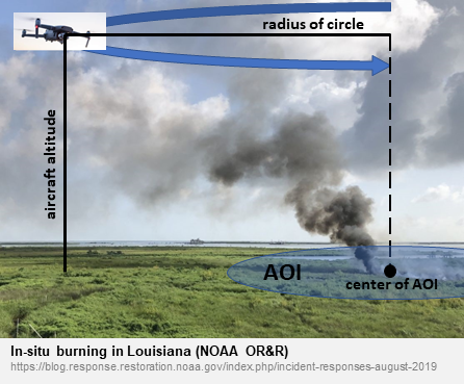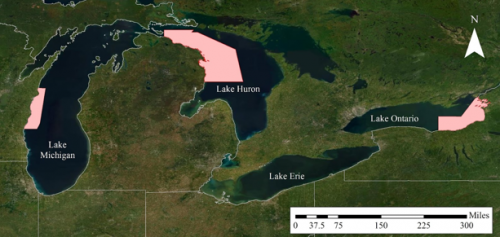Great Start in the Great Lakes After Two Successful Virtual Events!
FEB. 7, 2022 — NOAA’s scientific support coordinator in the Great Lakes, LT Rachel Pryor, hosted two webinars in recent weeks.

The first webinar was based on the observation of increased use of uncrewed aircraft regularly deployed to pollution and natural hazard response cases. The use of this equipment can provide quick and accurate data to support decision makers. This webinar took place on Jan. 25 and included LT Joshua McElhaney from the U.S. Coast Guard (USCG), Jennifer Horseman and Bryan Thom, both from Research Planning, Inc. The webinar discussed the importance of how Uncrewed Aerial System (UAS) pilots operate the asset to collect accurate and detailed data.
The speakers discussed UAS applications in oil spill response, including an overview of the UAS program in USCG District 9, where aerial systems have been deployed to support tanker groundings, marina fires, hurricane responses, and international exercises. Jennifer Horseman and Bryan Thom presented case studies of UAS deployments to support the recent California pipeline incident in Huntington Beach and Hurricane Ida response.
The second webinar took place on Feb. 2, when the superintendents of Thunder Bay National Marine Sanctuary and Wisconsin Shipwreck Coast National Marine Sanctuary, Jeff Gray and Russ Green, presented an overview of their respective sanctuary programs. This webinar was a collaboration between NOAA’s Office of National Marine Sanctuaries (ONMS) and OR&R's Emergency Response Division to share an overview of important cultural and environmental resources protected within a marine sanctuary, as well as to discuss response considerations for a pollution incident occurring within the boundary. The conversation provided details on the valuable cultural resources, including historical shipwrecks, that tell the legacy of the maritime industry in the Great Lakes and environmental resources that attract outdoor enthusiasts every year.

Ellen Brody, the Great Lakes Regional Coordinator for the ONMS program, described the process for a site to receive designation and the important work NOAA has done to partner with indigenous tribal nations while sites are under review. Lisa Symons, Regional Response Coordinator for the ONMS program, discussed the authorities of a federally-recognized sanctuary and the 1997 National Historical Preservation Act language included in Area Contingency Plans.
While in-person training continues to be limited, virtual webinars like these are valuable to keep the Great Lakes region up-to-date on emerging technologies and protected resources. Audience participation ranged from state, federal, and industry stakeholders, totaling roughly 60 individual attendees. Feedback was overwhelmingly positive and LT Pryor plans to continue hosting informative webinars in the Great Lakes region.
For further information, contact Rachel.L.Pryor@noaa.gov.
